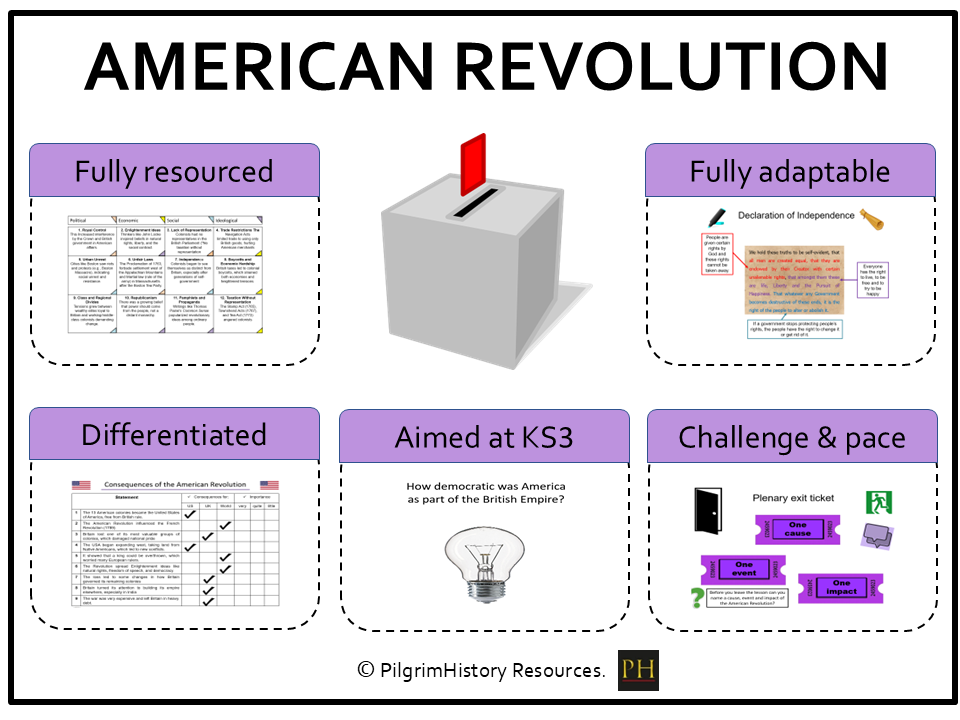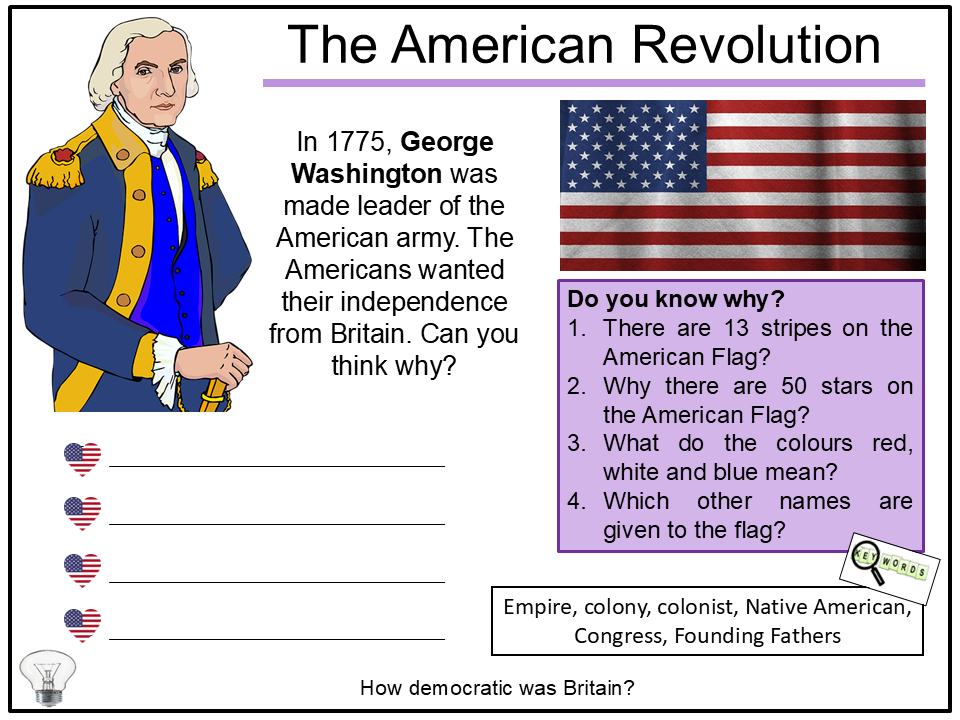


Bring the drama, ideals and global significance of the American Revolution to life with this dynamic and accessible lesson, designed to spark historical thinking and active engagement!
Students investigate a range of political, economic, social and ideological causes of the Revolution. They will categorise and colour-code the factors such as taxation, enlightenment ideas and colonial identity as well as encouraging independent thinking and class debate over the most significant cause.
Students explore key extracts from the Declaration of Independence with accessible support, evaluating JeffersonŌĆÖs language and ideas. What does ŌĆ£all men are created equalŌĆØ really mean? This is a brilliant activity for source skills and critical thinking.
An engaging reading activity examines the turning points and weaknesses of the British war effort. Students answer targeted comprehension questions and build an explanation of the British defeat. This si ideal for literacy, sequencing and analytical writing.
Students also explore the far-reaching consequences of American independence, including the spread of revolutionary ideas, the impact on the British Empire, and the foundation of a new nation. Included is a ŌĆ£who was affected?ŌĆØ task that reinforces global historical connections.
This lesson includes:
An engaging PowerPoint with step-by-step guidance.
A missing word activity giving the context to the American Revolution.
A colour coding task to link to political, economic, social and ideological causes together.
Source analysis tasks using a contemporary account.
A comprehension task with differentiated questioning.
An exit ticket plenary task to consolidate learning.
Why teachers will love this resource:
Fully resourced and differentiated.
Builds core Key Stage 3 skills such as historical thinking. empathy, understanding and extended writing.
Prepares students for GCSE themes like power, revolution, representation and Parliament.
Created by an experienced history teacher with over 20 years experience.
Something went wrong, please try again later.
This resource hasn't been reviewed yet
To ensure quality for our reviews, only customers who have purchased this resource can review it
to let us know if it violates our terms and conditions.
Our customer service team will review your report and will be in touch.